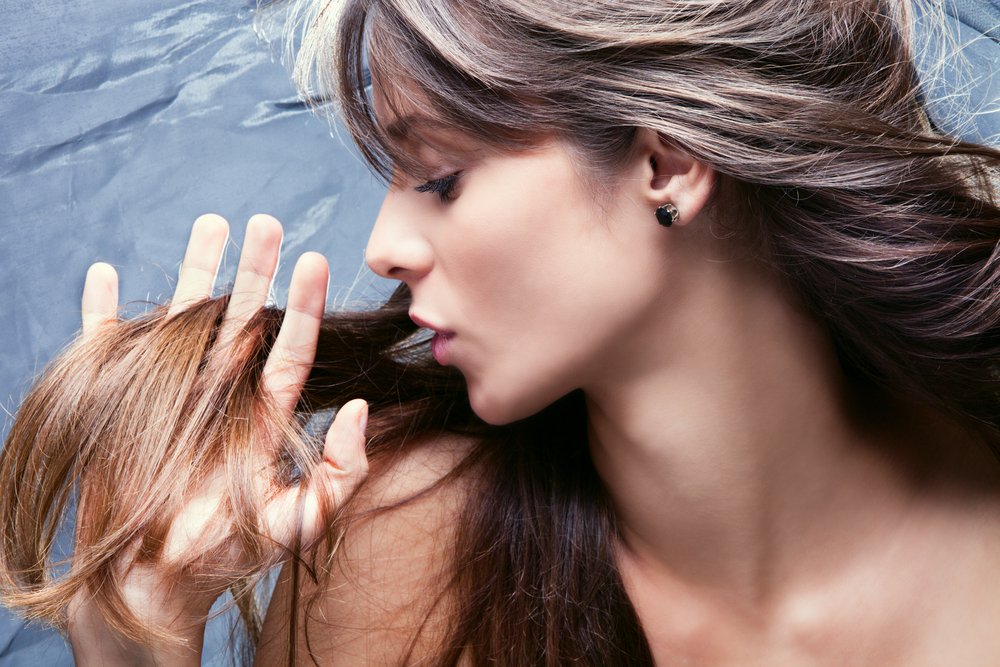You have thin, delicate, easily weighed-down hair and little time to give it some attention and care? Reach for a leave-in conditioner. You can spray it in a second and your hair will pay you back with gorgeous shine, volume and stunning appearance. How to choose the best leave-in conditioner?

Leave-in conditioner
They come in atomiser bottles, have a watery, lightweight consistency and need no rinsing. Leave-in conditioners can be bi-phase – slightly heavier and cut out for fine dry hair because the water phase is enhanced by richer formula – oils or silicones. A leave-in conditioner often works as a complement to other hair care products.
Firstly, a leave-in conditioner is an excellent alternative for people living actively and having little time for hair care and time-consuming treatments. Secondly, it is an amazing choice for those of you who have thin, weak, tangling, unruly and unmanageable hair: its lightweight formula won’t weigh down the hair. Instead, it eases detangling, shields from UVA, UVB radiation, heat and all kinds of physical damage.
Leave-in conditioner – effect
- shields from heat;
- saves from the UV radiation;
- adds shine and smoothes out, closing hair cuticle scales;
- has a conditioning effect;
- prevents frizz;
- nourishes, strengthens;
- makes hair soft;
- protects hair color.
Leave-in conditioner – ingredients – what to search for?
- Keratin – a building block of hair, fills in gaps in the external hair structure, reinforces, seals fibers and enhances the condition and appearance of hair. One of the most important ingredients in hair care.
- UV filter – keeps hair color from fading, maintains moisture, protects hair fibers from harmful sunrays and loss of melanin.
- Vitamins and minerals – enhance hair nourishing processes and are essential for the proper growth and repair. Hair is strong, beautiful, bouncy and grows healthily.
- Natural oils – small particles of oils work in a very clever way adapting to the gaps in the external cuticle layer. They effectively seal the structure upgrading shine and smoothness. Vitamins, minerals and an array of nutrients penetrate deeply inside the keratin layer revitalising hair. Oils contain quite a lot of lipids which remedy all ‘shortcomings’ in the intercellular cement and fix the structure in weak hair.
- Plant extracts – they have been known as incredible conditioners for ages. Our grandmas and great grandmas successfully used hop, nettle, glycyrrhiza, horsetail, etc. Every region of the world has different herbal extracts which have been known for ages: lavender, Siberian pine, Seaberry or Cloudberry. Hot chili for increasing blood flow to the scalp, Barbary fig for delaying hair aging processes. Combine plant extracts with oils and use as spray-on hydrosols. Plant extracts are also high in minerals and vitamins, hold back hair loss, moisturise and condition the scalp, block excessive oil production.
- Hyaluronic acid – crucial for the proper function of all body cells, rejuvenates, revitalizes, helps keep excellent level of moisture because it binds water molecules on hair surface and in the deeper layers.
- Silk – (preferably hydrolyzed silk which has smaller particles and better ability to penetrate hair structure) – makes styling and combing easier, moisturises, smoothes out hair, boosts shine.
- Panthenol – enhances the production of keratin, smoothes out hair structure, slightly boosts shine, freshens up hair color. It tames extremely unruly rebellious hair which tends to tangle.
- Fatty alcohols – it is a group of so-called good alcohols which moisturise and let precious nutrients be transported into hair. Moreover, they smooth out and help comb out tangled hair.
Leave-in conditioner – which ingredients to avoid?
Apart from valuable hair-enhancing ingredients, leave-in conditioners contain substances which can worsen its condition, mostly heavy, short-chain, monohydric alcohols (alcohol denat, benzyl alcohol, ethanol alcohol, propanol alcohol). To make things worse, it happens that they cause allergic reactions and skin irritations. Another group of bad substances comprises heavy silicones which build up on hair surface, have a comedogenic effect, tend to deprive hair of moisture and are hard to remove with a mild shampoo. In order to get rid of heavy silicones you must use unfriendly shampoos containing SLS/SLES which are also harmful and may be the source of allergies and scalp irritation. The most popular ones include simethicone, trimethicone, trimethylsiloxysilicates.

















Leave a Reply